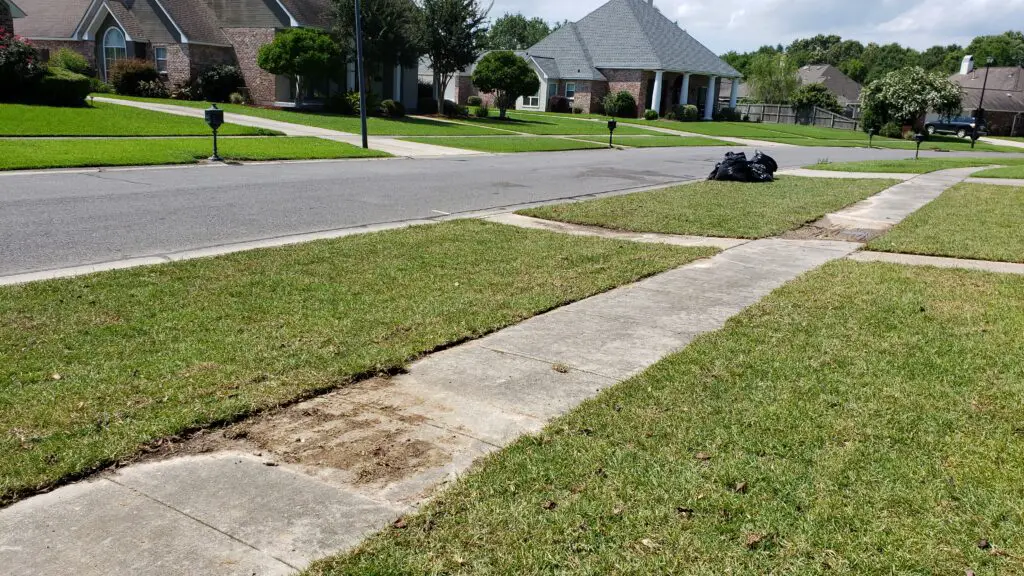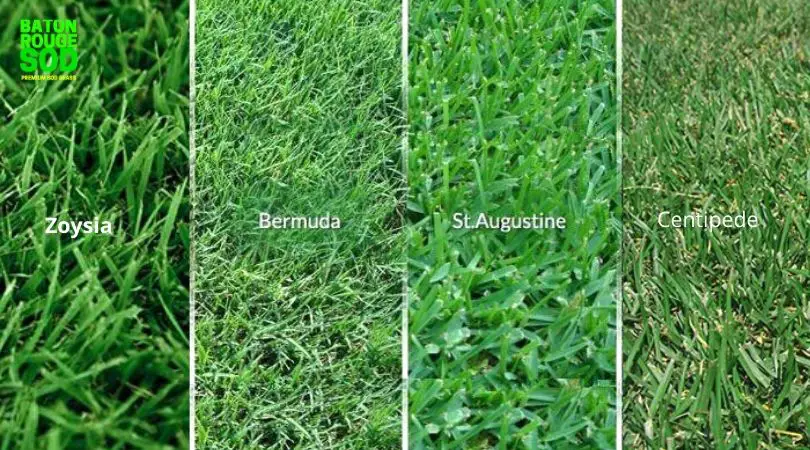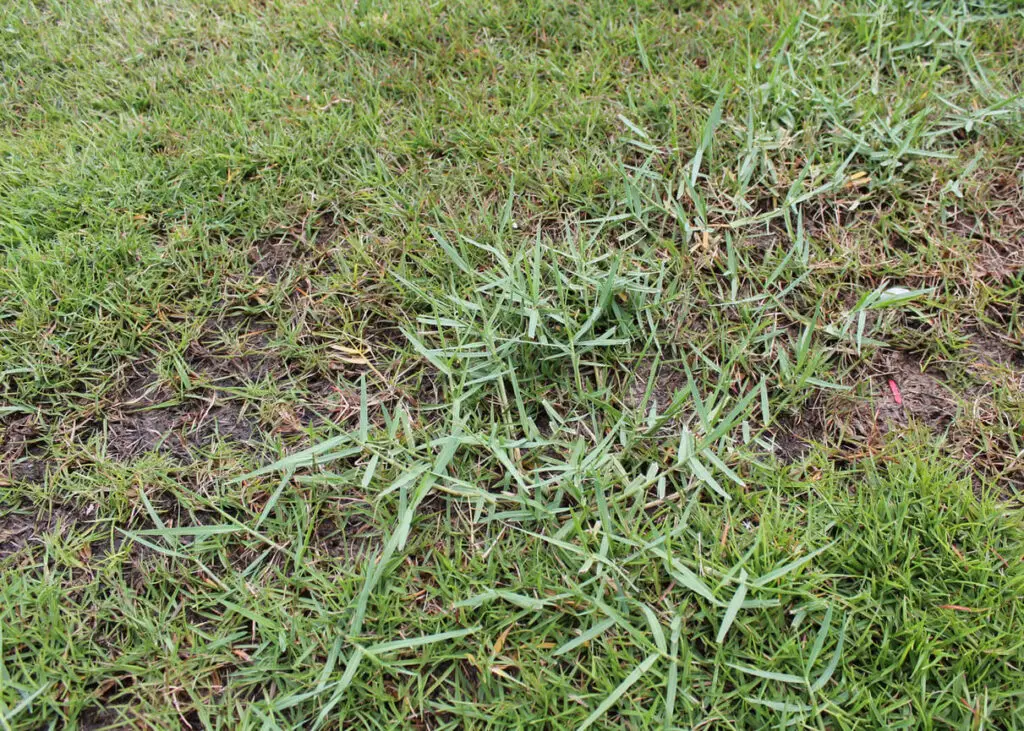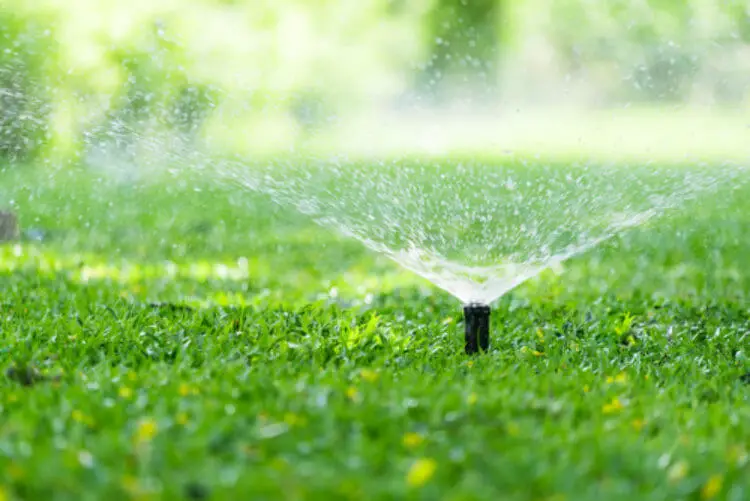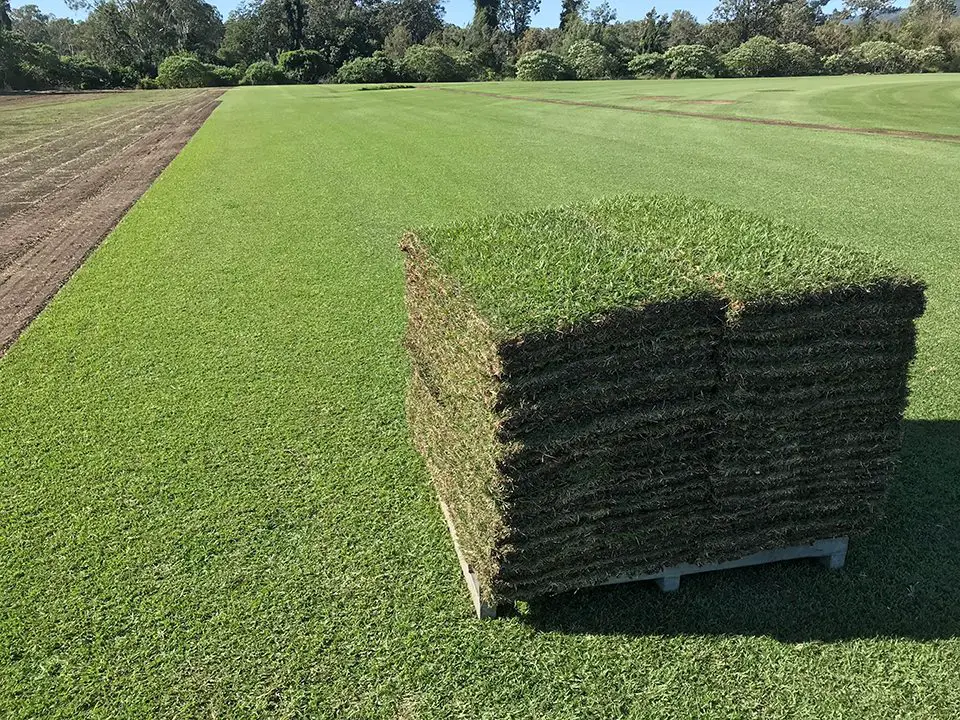You’ve spent hours, or even days, preparing your soil.
You’ve chosen the perfect grass variety for your lawn.
The pallets of sod have arrived and now it’s time to install them.
But how long does sod take to root?
It’s easy to be impatient when laying new grass.
In optimal environmental conditions, it takes as few 10-14 days for new turfgrass to establish a good root system. This may take a longer time during cooler weather.
Installing a new lawn is a great way to dramatically improve the look of your yard fast.
Depending on the time of year, and grass species it can take anywhere from 10 to 30 days to fully root.
How Long Does New Sod Take to Root?
There are a few different factors, including the type of grass you are using, the time of year, and the conditions of your yard.
How long does sod take to root?
In general, it takes about 2-4 weeks to fully root in your yard.
Warm-season turf grasses like St. Augusting grass, Bermuda grass, Zoysia grass, Centipede grass and Bahai all root pretty easily.
Kentucky bluegrass, Fescue, and cool-eason grasses depend on favorable weather conditions to root fast.
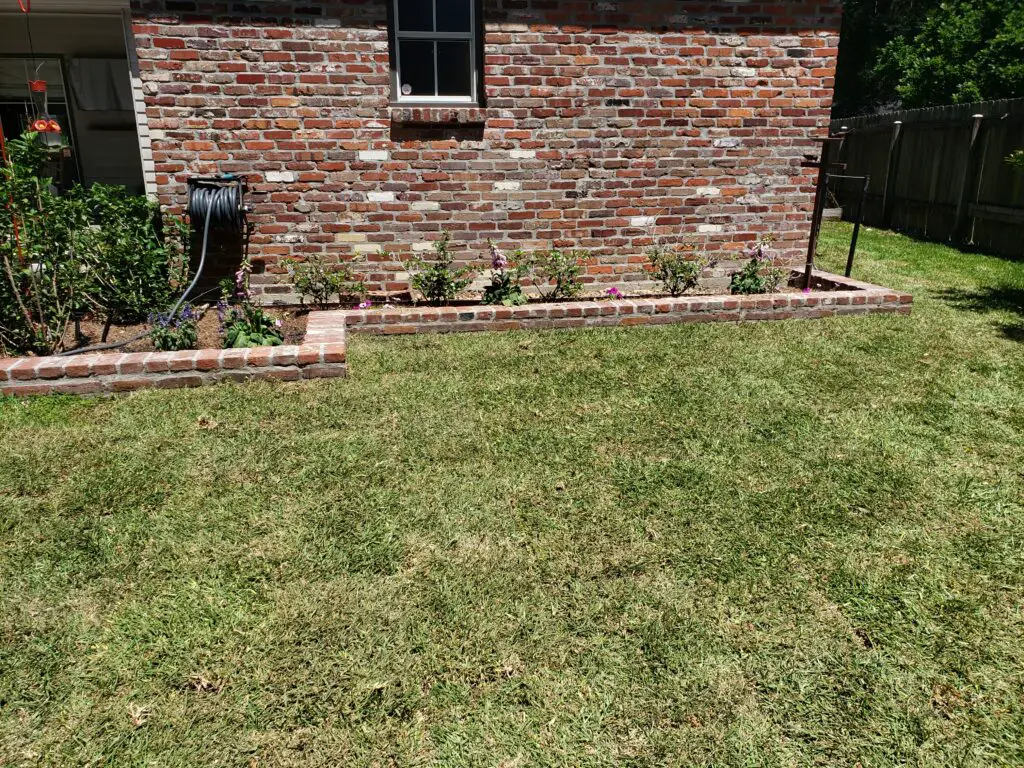
How Can You Tell if Sod is Rooted?
As the old saying goes, “you can’t judge a book by its cover.”
The same is true for sod.
Just because the turfgrass looks healthy on the surface doesn’t necessarily mean it’s rooted beneath.
There are several signs that indicate whether your sod is truly rooted in the ground.
One of the most apparent signs that sod is not rooted is if it starts to pull away from the edging.
This usually happens when sod is first installed and hasn’t had time to root itself fully.
Another sign that sod may not be fully rooted is if it appears to be drying out or wilting.
You will usually notice brown around the edges.
This can happen for various reasons but usually indicates heat stress or that the roots aren’t getting enough water.
You can tell if it’s rooted by pulling up on a piece. If it is hard to pull, your grass has taken root.
What’s The Difference Between Shallow Roots and Deep Roots on lawn turf grass?
One of the most common questions we get from our customers is: “What’s the difference between shallow roots and deep roots? ”
The answer isn’t as simple as it might seem at first glance. There are actually two kinds of roots that can develop in your lawn, and each has its own unique characteristics that make it different from the other.
A lawn’s root system can be divided into two different types: shallow roots and deep roots.
Shallow roots are the ones that most people think of when they think about lawn grass. They usually grown between 1/2″ and 2″ deep but can routinely grow 4 inches deep if conditions are right.
Since they don’t go very deep into the soil, they quite sensitive to heavy traffic and extreme weather conditions like drought or flooding.
They tend not to be able to withstand those kinds of conditions well enough to maintain healthy growth patterns over time.
Deep roots, on the other hand, grow deeper than 2″.
They can go down 6″ to 12″, depending on the type of soil and grass that’s growing there.
Deep rooted grasses often tend to be healthier because; their deeper root systems allow them access to water and nutrients from deeper in the soil column.
This adaptation is what keeps them strong even during dry spells or drought conditions!
How do they affect my lawn grass growth and health?
Grass roots are essential to lawn health and growth.
They anchor grass blades to the soil, and they provide moisture and nutrients to the plant as it grows.
A deep root system allows the grass to survive droughts and long periods with little to no water.
Proper soil preparation ensures your new turf sod installation has deep root growth and complete root development.
To encourage your turf’s roots to grow deep, water for a longer time but less frequently.
Saturate when you irrigate your new lawn for the first time.
Reduce the watering frequency and water longer to grow deep roots.
Watering often but for shorter times, encourages your grass to develop shallow roots.
How can I make my sod root faster?
There are a few things you can do to help your sod take root quickly.
Use a lawn roller to help level the underlying soil.
The sod roller removes air pockets and ensures that the pieces adhere to the soil beneath.
How long does it take for sod lines to disappear?
Sod lines are created when new turf is installed. The pieces of grass grow into each other making a tight weave.
These lines generally disappear within a few weeks as the grass grows and spreads.
However, if your lawn has heavy foot traffic, the lines may take longer to disappear.
To speed up the process, continue with good lawn care.
You can try mowing your lawn more often than usual.
This will encourage horizontal grass growth which will cover sod lines a little faster.
How Long After Laying Sod Can You Walk On It?
Keeping off new sod for at least two weeks is important to allow the roots to establish themselves.
After two weeks, you can begin walking on the sod cautiously.
Avoid high traffic areas along sidewalks and driveways until the grass has been mowed a few times.
You can usually start walking on the sod when the ground firms up and it has developed full root establishment.
How soon do you mow new sod?
You can start regular lawn care once the grass is established.
Mow your lawn when your grass has attached to the soil below.
The average time to start mowing is six weeks.
Start cutting the grass at one of the highest height settings..
How much should I water new sod?
When you first lay down new sod, it is important to water until the ground and grass is saturated.
Your first watering session should be done immediately after installation
Watering schedule and consistent watering
For the first two weeks, you should water your lawn twice a day for about 15 minutes each time.
After that, you can cut back to once a day for 30 minutes.
If it rains, you can skip a day of watering.
Try to avoid leaving the blades of the grass wet for too long, as this can promote fungal growth.
You should water your lawn
How long should I water new sod?
When you water your new grass, the key is to keep the root system moist without over-saturating the ground.
For the first week or two after installation, water your lawn deeply and thoroughly 1 – 2 times per day.
After that, you can reduce watering to once every other day. as the roots begin to establish themselves.
How long you water each time will depend on factors like temperature and rainfall, but a good rule of thumb is to run sprinklers for about 30 minutes per session.
stop watering every day after the second or third week.
Tips: How To Care For New Grass
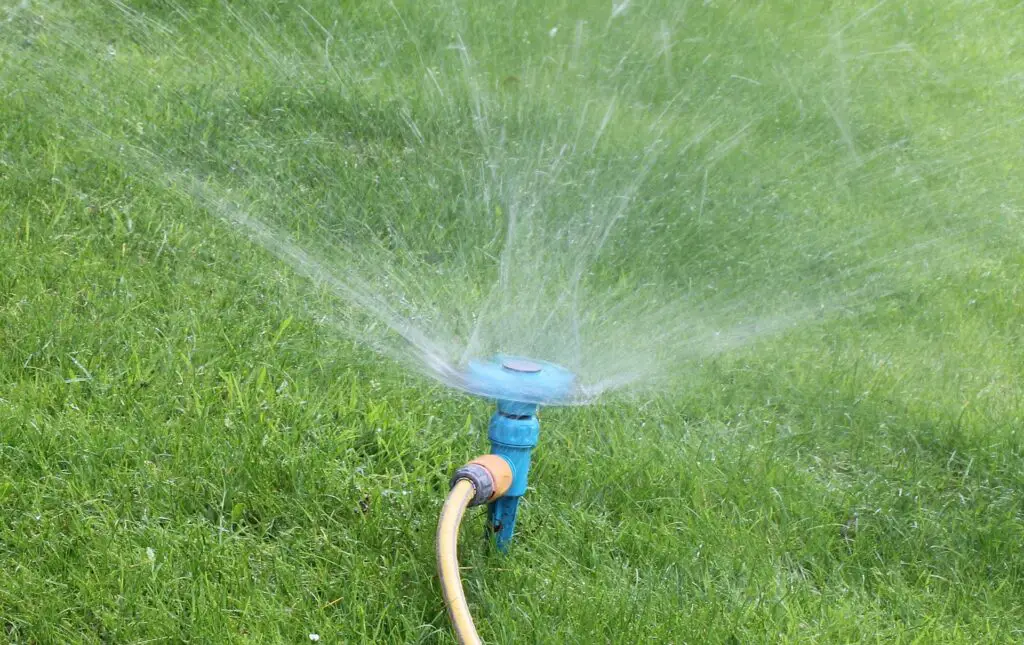
What is the best time of day to water new sod?
The best time of day to water new sod is early in the morning. Watering early in the morning allows time for the grass to dry before night. This reduces the chances of fungus developing in your lawn.
Can You Water Sod Too Much?
It is hard to overwater sod, but if you do you may notice root rot
stop watering every day when the roots attach to the soil below. Do not water when it rains
Should I fertilize new sod?
One important step in taking care of your new lawn is fertilizing it.
Fertilizing new sod helps it develop a deep, strong root system.
A strong root system is important for a healthy lawn.
It helps the grass withstand drought and disease, and also helps the grass bounce back after heavy foot traffic.
Use a good lawn fertilizer that has a high percentage of nitrogen and potassium.
you can use a good granular or liquid fertilizer once the grass is established
Tip: How To Make Grass Green Fast
Should I Put Starter Fertilizer On New Sod?
The answer depends on a few factors, including the type of grass you’re planting and the time of year.
Most grasses do best when they’re fertilized in the spring and fall.
However, it’s best to fertilize in late spring or early summer if you’re planting warm-season grass like bermudagrass or zoysia.
As for whether or not to use starter fertilizer on new sod, it really depends on the quality of the soil beneath the sod.
If the soil is poor or has a lot of clay, starter fertilizer can help boost the grass.
A good starter fertilizer will encourage fast grass growth and stimulate the root system to develop. Grass will root faster if you use a good organic lawn starter fertilizer.
However, if the soil is already rich and loamy, you probably don’t need to use starter fertilizer.
Conclusion.
How Long Does It Take For Sod To Take Root?
How to get your new sod to root and establish good deep root system in a season and as quick as a few weeks.
deep root growth and healthy root development
If you were wondering how long does sod take to root, many variables could alter or affect the length of time.
It takes approximately 2-4 weeks for sod to take root. The time frame depends on the type of grass, weather conditions, and how well the sod is cared for.
It is important to water regularly and keeps the turf moist during this time. Once the grass has taken root, you can begin to reduce watering and fertilize as needed.
With the proper care, your grass will be fully rooted in no time!
How Many Square Feet On A Pallet
How Long Does Sod Take To Root

